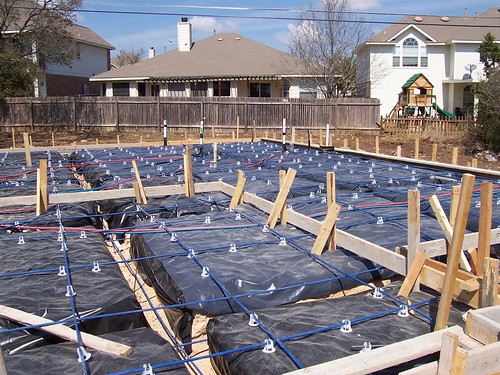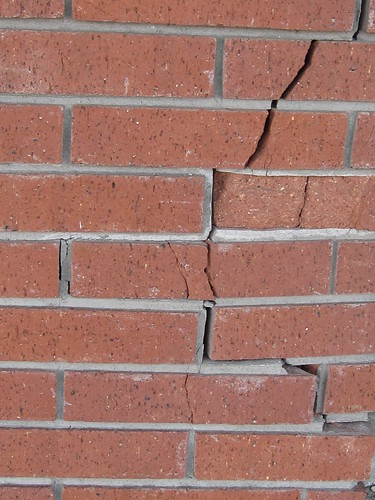This is the second part in our multi-part series of posts, "Pier and Beam versus Slab Foundation." Be sure to read the first post in this series, if you haven't already.
In our last post, we discussed pier and beam foundations (sometimes called post and beam foundations), including what they were, and their pros and cons. In this post, we'll covered the basics of slab foundations.
The Basics
Slab foundations are usually the easiest (and thus the least expensive) foundations to build. The slab is a flat concrete pad poured directly on the ground. This takes minimal site preparation, very little formwork for the concrete, and less labor to build than a pier and beam foundation. Slab foundations work well on level sites in warmer climates (like what we have here in north Texas and southern Oklahama). Slab foundations can be problematic farther north because when the ground freezes during winter, this freezing may shift the slab. This may damage the structure sitting on the foundation, plumbing running through and under the foundation, and the foundation itself.
How Slab Foundations are Constructed
In most cases, the perimeter of the slab is about 2 feet deep. The interior of the slab can be as little as 4 or 6 inches thick. Below the slab sit a 4 to 6 inch layer of gravel. To keep moisture from the ground rising through the gravel to the slab, a 4-millimeter sheet of plastic is placed. Reinforcing bar (rebar) is laid out in a grid framework (supported a few inches above the plastic sheet) and the concrete is then poured over everything.
This type of foundation is commonly called a floating slab since it "floats" on the soil. What holds the foundation in place is the deeper layer of concrete around the perimeter of the foundation.
In places with common and severe winter freeze, the concrete along the perimeter extends below the frost line.
The Advantages and Disadvantages of a Slab Foundation
Slab foundations offer the following advantages:
- Slab foundations usually take less time to construct.
- Slab foundations require less prep work of the site.
- Typically, slab foundations cost less, due to the two points above.
- Since there is no crawlspace under the home, there's no risk of animals getting underneath the structure.
- Since the slab sits on the ground, entries and exits to and from the structure are close the ground -- perhaps only a step or two. This is good news for those with disabilities or other restrictions that makes steps difficult to navigate.
On the other hand, there are a few drawbacks to slab foundations:
- Since the plumbing and gas lines (if applicable) run directly through the concrete slab, it's more expensive to fix these problems below the home. Also, shifts in the foundation can break pipes (fresh water, sewer lines, and gas).
- Once a foundation has failed, it can be more expensive to fix the foundation since piers have to be sunk below the home. (In contrast, a pier and beam already has piers, which may only need adjustment.)
- Slab foundations cannot be used in homes where a basement will be built.
- Slab foundations cannot be used in areas with significant or prolonged freezes. The seasonal upheaval and other shifts can destroy a slab foundation.
- Concrete slabs can crack. These cracks can range from minor annoyances to major problems.
Concrete slabs can be a good choice for your home or business, but it has to be done right from the get-go, and only for the right type of conditions. If you have quesitons, feel free to contact us or shoot us a question.













